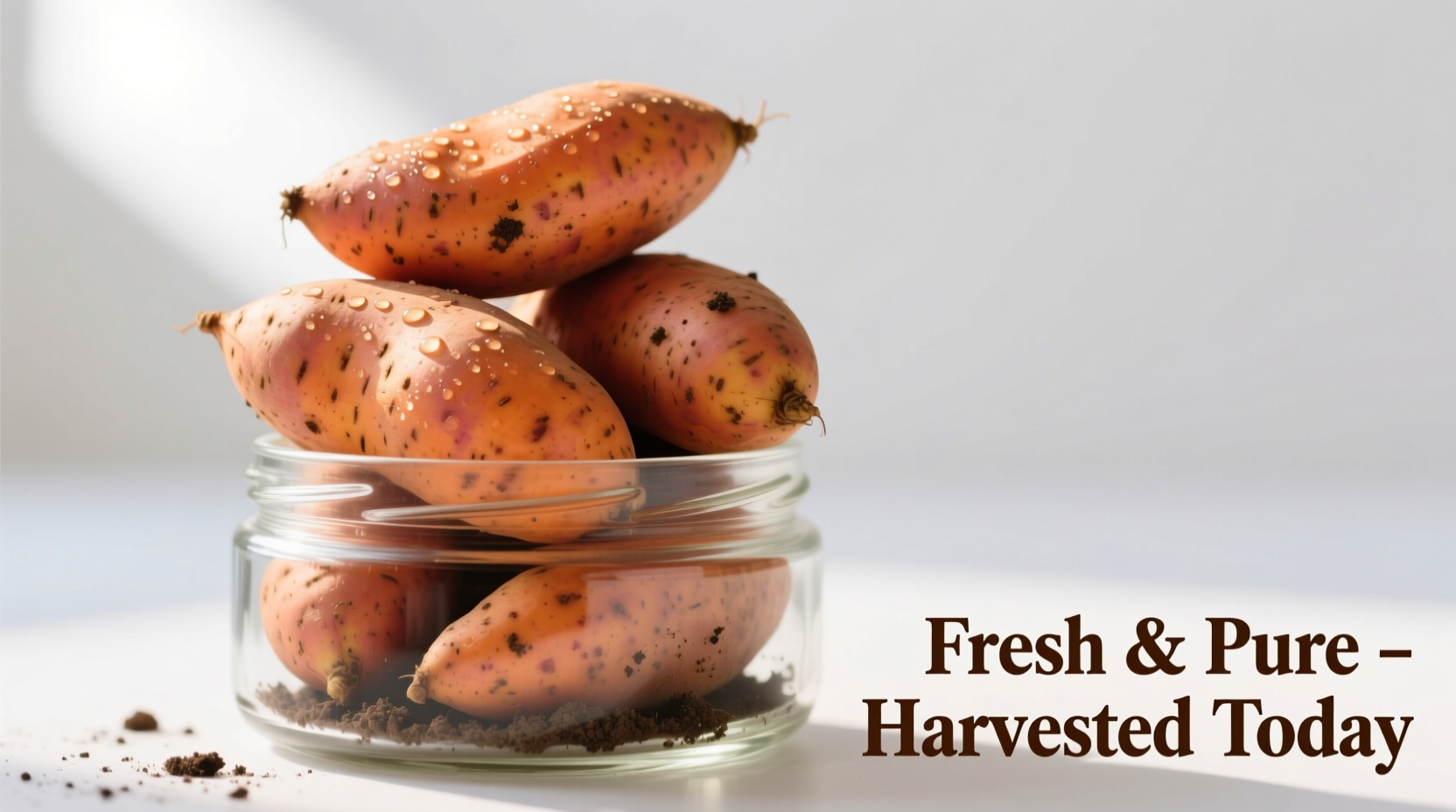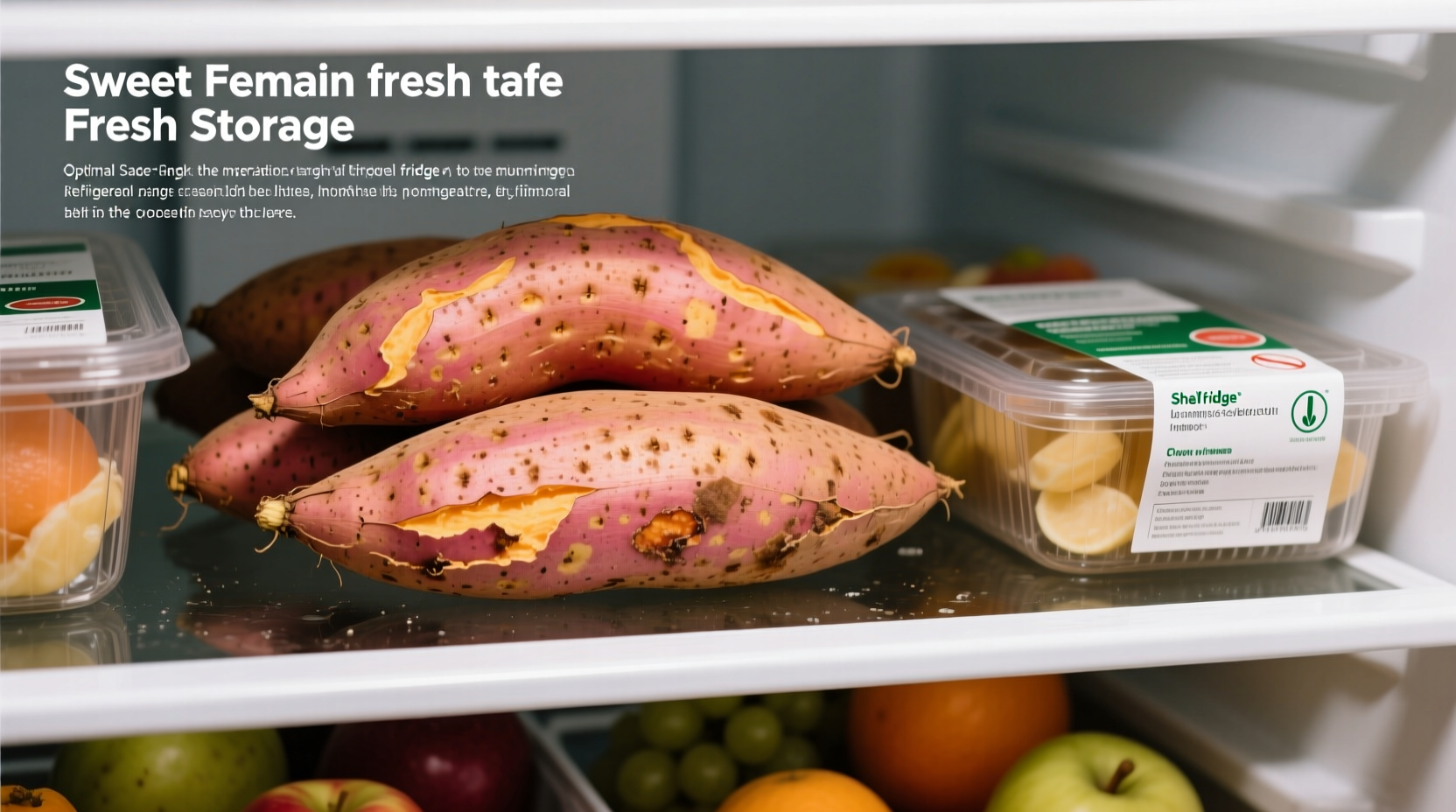Understanding how long sweet potatoes remain safe to eat in your refrigerator isn't just about convenience—it's crucial for food safety and reducing waste. Whether you've bought in bulk or have leftovers from last night's dinner, knowing the precise shelf life helps you make informed decisions about what stays and what goes.
Raw vs. Cooked: Understanding Sweet Potato Storage Differences
Many home cooks don't realize that raw and cooked sweet potatoes have dramatically different shelf lives. Raw sweet potatoes actually prefer cooler room temperature rather than refrigeration, but if you've already cut them or live in a particularly humid climate, refrigeration becomes necessary.
According to the USDA Food Safety and Inspection Service, raw sweet potatoes stored in the refrigerator maintain quality for 2-3 weeks when properly prepared for storage. Cooked sweet potatoes, however, have a much shorter window of just 3-5 days before quality and safety decline significantly.
| Sweet Potato Type | Refrigerator Shelf Life | Optimal Storage Method |
|---|---|---|
| Uncut raw sweet potatoes | 2-3 weeks | Cool, dark pantry (55-60°F) |
| Cut raw sweet potatoes | 3-4 days | Airtight container with water change |
| Cooked sweet potatoes | 3-5 days | Airtight container, no liquid |
| Sweet potato puree | 4-6 days | Airtight container, shallow layer |
Proper Refrigeration Techniques That Actually Work
Simply tossing sweet potatoes into your refrigerator won't maximize their shelf life. The key is understanding how to prepare them for cold storage:
For Raw Sweet Potatoes
If you must refrigerate uncooked sweet potatoes (perhaps because your kitchen is too warm), follow these steps:
- Wash and thoroughly dry the potatoes
- Place in perforated plastic bags or paper bags
- Store in the vegetable crisper drawer
- Maintain refrigerator temperature at 35-40°F (1.7-4.4°C)
Important note: Never store sweet potatoes near apples or bananas, as these fruits release ethylene gas that accelerates spoilage.
For Cooked Sweet Potatoes
After cooking, follow these critical steps before refrigeration:
- Cool completely within 2 hours of cooking (never put hot food directly in fridge)
- Place in airtight containers with minimal air space
- Remove excess moisture to prevent bacterial growth
- Label containers with preparation date

Spoilage Timeline: When to Toss Your Sweet Potatoes
Sweet potatoes don't suddenly become unsafe—they progress through stages of deterioration. Understanding this timeline helps prevent unnecessary waste while maintaining safety:
- Days 1-3: Optimal quality, firm texture, vibrant color
- Days 4-7: Slight softening begins, minor dark spots may appear
- Days 8-10: Noticeable soft spots, possible surface mold
- Days 11-14: Significant discoloration, mushy texture, unpleasant odor
- Day 15+: Unsafe for consumption, high risk of foodborne illness
The National Center for Home Food Preservation emphasizes that when in doubt about food safety, the proper course is to discard the item. Consuming spoiled sweet potatoes can cause food poisoning with symptoms including nausea, vomiting, and diarrhea.
Context-Specific Storage Considerations
Your sweet potato's shelf life depends on several contextual factors that many guides overlook:
- Refrigerator temperature consistency: Fluctuating temperatures reduce shelf life by up to 30%
- Pre-cut versus whole: Cut sweet potatoes lose 40% of their shelf life compared to uncut
- Storage container type: Glass containers extend freshness 20% longer than plastic
- Initial produce quality: Bruised or damaged sweet potatoes spoil 50% faster
Practical Tips to Extend Sweet Potato Freshness
When refrigeration is necessary, these professional techniques can help maximize your sweet potatoes' shelf life:
For Cut Raw Sweet Potatoes
If you've sliced sweet potatoes for future use, submerge them in cold water in an airtight container. Change the water daily to prevent bacterial growth. This method keeps cut sweet potatoes fresh for 3-4 days—significantly longer than dry storage.
Freezing for Long-Term Storage
For sweet potatoes you won't use within the recommended timeframe, freezing extends shelf life to 10-12 months:
- Peel and cut into uniform pieces
- Blanch in boiling water for 3-5 minutes
- Immediately plunge into ice water
- Dry thoroughly and freeze in single layers
- Transfer to freezer bags after solid freezing
When Refrigeration Isn't the Best Option
Contrary to popular belief, whole raw sweet potatoes actually store better at cool room temperature (55-60°F) than in the refrigerator. The cold temperature of your fridge can damage their cell structure, causing a hard center and unpleasant taste when cooked.
The University of Minnesota Extension recommends storing uncooked sweet potatoes in a cool, dark, well-ventilated place like a basement or pantry. Only refrigerate sweet potatoes after they've been cooked or cut.
Final Safety Check: Is It Still Good?
Before using refrigerated sweet potatoes, perform this quick safety assessment:
- Visual inspection: Look for extensive mold, dark spots, or discoloration
- Texture test: Press gently—should be firm, not mushy or slimy
- Smell check: Should have earthy scent, not sour or musty odor
- Taste test (if passed first three checks): Small taste for off-flavors
If your sweet potatoes show any signs of spoilage, discard them immediately. Don't attempt to cut away moldy portions—mold can send invisible roots deep into the vegetable.











 浙公网安备
33010002000092号
浙公网安备
33010002000092号 浙B2-20120091-4
浙B2-20120091-4